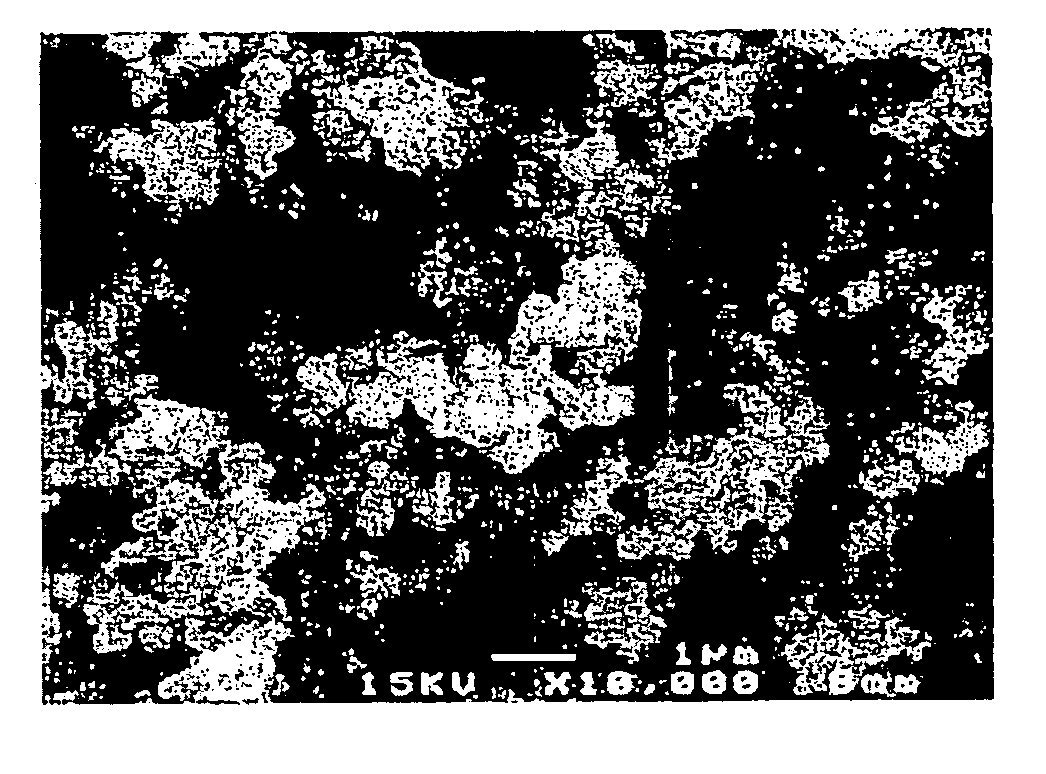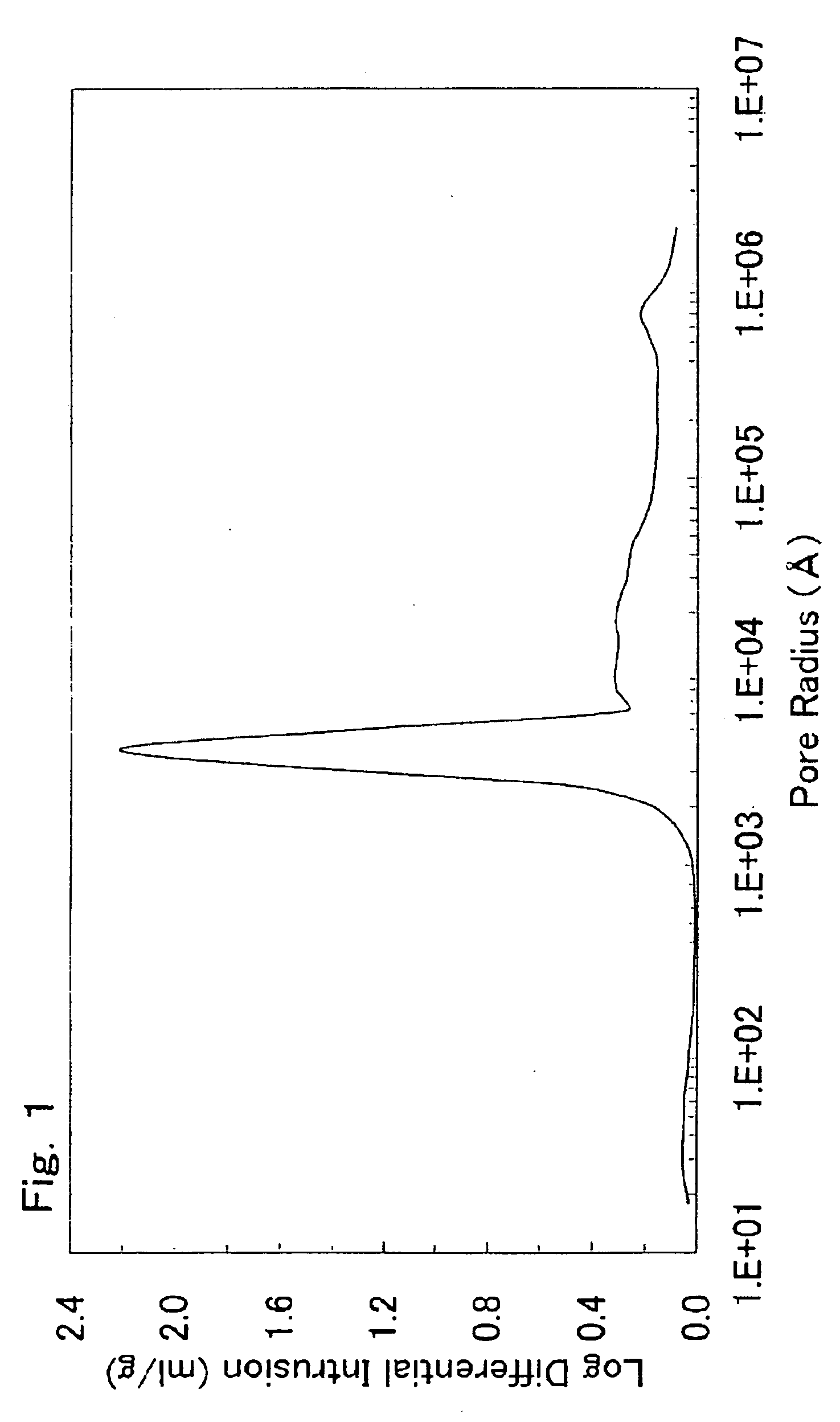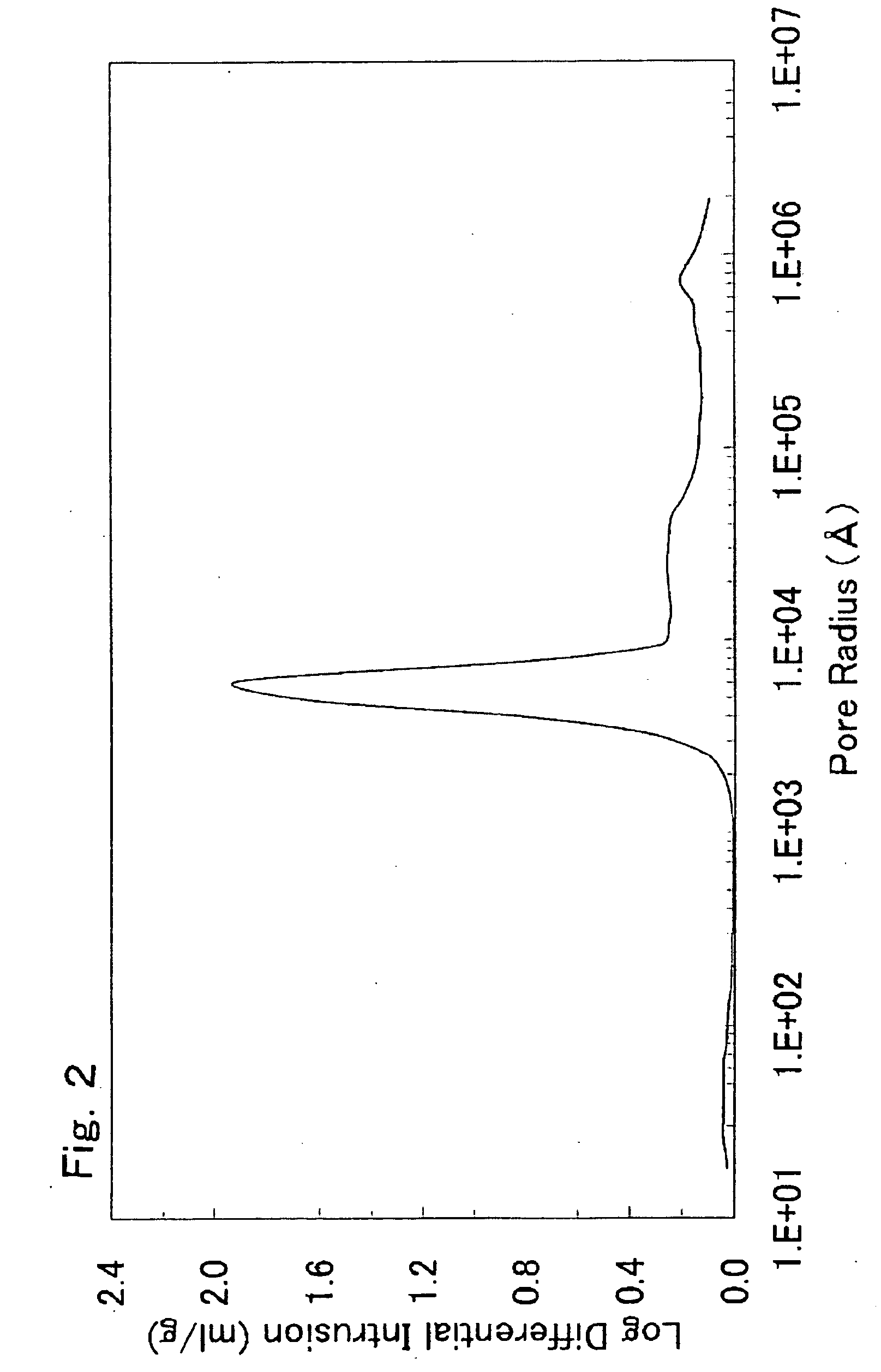Lithium transition metal-based compound powder for positive electrode material in lithium rechargeable battery, method for manufacturing the powder, spray dried product of the powder, firing precursor of the powder, and positive electrode for lithium rechargeable battery and lithium rechargeable battery using the powder
a technology of lithium rechargeable batteries and compound powders, which is applied in the direction of nickel compounds, cell components, electrochemical generators, etc., can solve the problems of low capacity and poor high-temperature characteristics (cycle and storage), afford batteries that are not insufficiently safe, and improve load characteristics. , the effect of improving the load characteristics
- Summary
- Abstract
- Description
- Claims
- Application Information
AI Technical Summary
Benefits of technology
Problems solved by technology
Method used
Image
Examples
example 1
[0642]Li2CO3, Ni(OH)2, and Mn3O4 were weighed and mixed in such a manner that the molar ratio was Li:Ni:Mn=1.267:0.250:0.583. Deionized water was added to the mixture to form a slurry. The slurry was stirred to pulverize the solid components in the slurry in such a manner that the solid components have a median diameter of 0.15 μm, with a circulating wet pulverizer of the dispersing medium agitation type.
[0643]The slurry was spray-dried with a spray dryer to form a powder. About 15 g of the resulting powder was charged into an alumina crucible and fired at 950° C. for 12 hours (heating and cooling rates: 5° C. / min) in an air atmosphere. The fired powder was disaggregated to yield a lithium-nickel-manganese composite oxide having a composition of Li1.088(Li0.167Ni0.254Mn0.579)O2 (x=0.167, y=0, and z=0.088), a volume resistivity of 3.7×106 Ω·cm, and a carbon content of 0.092% by weight. The average primary-particle diameter was 0.2 μm. The median diameter was 1.7 μm. The 90% cumulativ...
example 2
[0644]Li2CO3, Ni(OH)2, and Mn3O4 were weighed and mixed in such a manner that the molar ratio was Li:Ni:Mn=1.267:0.250:0.583. Deionized water was added to the mixture to form a slurry. The slurry was stirred to pulverize the solid components in the slurry in such a manner that the solid components have a median diameter of 0.16 μm, with a circulating wet pulverizer of the dispersing medium agitation type.
[0645]The slurry was spray-dried with a spray dryer to form a powder. About 15 g of the resulting powder was charged into an alumina crucible and fired at 1,000° C. for 12 hours (heating and cooling rates: 5° C. / min) in an air atmosphere. The fired powder was disaggregated to yield a lithium-nickel-manganese composite oxide having a composition of Li1.067(Li0.167Ni0.254Mn0.579)O2 (x=0.167, y=0, and z=0.067), a volume resistivity of 9.2×105 Ω·cm, and a carbon content of 0.059% by weight. The average primary-particle diameter was 0.5 μm. The median diameter was 2.6 μm. D90 was 4.6 μm....
example 3
[0646]Li2CO3, Ni(OH)2, and Mn3O4 were weighed and mixed in such a manner that the molar ratio was Li:Ni:Mn=1.211:0.333:0.556. Deionized water was added to the mixture to form a slurry. The slurry was stirred to pulverize the solid components in the slurry in such a manner that the solid components have a median diameter of 0.17 μm, with a circulating wet pulverizer of the dispersing medium agitation type.
[0647]The slurry was spray-dried with a spray dryer to form a powder. About 15 g of the resulting powder was charged into an alumina crucible and fired at 900° C. for 12 hours (heating and cooling rates: 5° C. / min) in an air atmosphere. The fired powder was disaggregated to yield a lithium-nickel-manganese composite oxide having a composition of Li1.066(Li0.111Ni0.334Mn0.555)O2 (x=0.111, y=0, and z=0.066), a volume resistivity of 2.0×105 Ω·cm, and a carbon content of 0.084% by weight. The crystal structure was determined to have the R(−3)m layered structure. The average primary-part...
PUM
 Login to View More
Login to View More Abstract
Description
Claims
Application Information
 Login to View More
Login to View More - R&D
- Intellectual Property
- Life Sciences
- Materials
- Tech Scout
- Unparalleled Data Quality
- Higher Quality Content
- 60% Fewer Hallucinations
Browse by: Latest US Patents, China's latest patents, Technical Efficacy Thesaurus, Application Domain, Technology Topic, Popular Technical Reports.
© 2025 PatSnap. All rights reserved.Legal|Privacy policy|Modern Slavery Act Transparency Statement|Sitemap|About US| Contact US: help@patsnap.com



